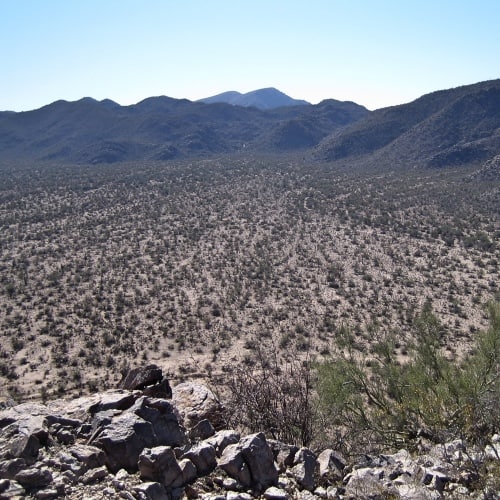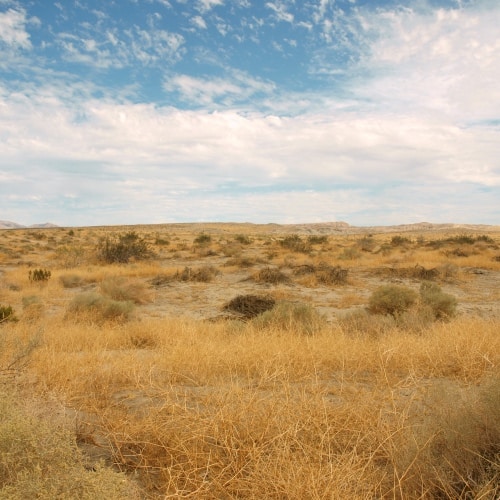When we think about deserts, we usually imagine them as quintessentially remote. We tend to take their remoteness as primordial rather than see it as a result of social or cultural construction. This, at least, was the image I had in my head when I started my fieldwork on the United States-Mexico Border in southern California in 2009.
My initial intention was to focus on the spectacular aspects of the border: the incredible asymmetries of power, living standards and economic conditions visible at the U.S.-Mexico border, all of which keep bringing it back to the very center of political attention.
Since the early 1990s, the border has seen a proliferation of infrastructure development, the deployment of thousands of additional Border Patrol agents, and an increasing use of surveillance technologies. In the San Diego area, this vast and diverse set of tools, whose objective is deeply entwined with the idea of securing the U.S. homeland from different forms of threats, has been – and still is – highly visible. Many scholars in border studies have pointed out that the political construction of the US-Mexico border as a line of defense, for instance through 1994’s Operation Gatekeeper in California, has been one way for the state to exercise its sovereignty, to show that it effectively “regained control” over its territory. One of the most dramatic symbols of these border politics is the double-layered fence known as the “border wall” around the cities of San Diego and Tijuana.

At first glance, the Sonoran Desert, which branches inland from the northern end of the Gulf of California, could be seen as being profoundly isolated and far away from the issues at stake in San Diego. But the specific modality of this desert border is intrinsically connected to the more urban ones. Sovereignty, I argue, is exercised by the state also through the making of remoteness.
The double fence surrounding border cities, the huge increase in Border Patrol officers and the new technologies deployed at the border did make the crossing much more difficult within urban areas. As a result, migrants were forced to cross the border in more “remote” locations. Over the years, the Sonoran Desert became one of the cheapest and most popular migration routes for Mexicans and Central Americans seeking to cross the international border illegally. This bordering process has created different borders that are deeply connected to each other. If the “border wall” in San Diego is made to be seen, the Sonoran Desert is the place that the majority of undocumented migrant cross to enter the southwestern United States, out of public view. The Sonoran Desert, and its remoteness, has then to be understood as part of the socio-historic process of the U.S.-Mexico border construction.

In the lingo of Customs and Border Protection, the federal agency in charge of the border, the desert works as a “natural deterrent” for migrants. As a matter of fact, crossing the border in these areas involves overcoming huge difficulties and dangers. The distance migrants have to walk is up to eighty miles, and during the crossing, migrants are subject to extreme temperatures – above forty degrees Celsius in summer and below zero degrees on winter nights in the mountains. This can cause dehydration, hyperthermia and severe hypothermia leading to death. Migrants are also confronted with dangerous animals and often become victims of thieves operating on the U.S. side of the border.
But this deterrent is all but “natural”. Not only did the Sonoran Desert become a migratory route as a consequence of specific border policies, it is also a territory in which remoteness is actively shaped by the American federal state.
First of all, numerous portions of the border only have vehicle barriers or no fence at all, making it easy to enter the United States. But in those desert areas, almost uninhabited, crossing the border is not enough. Once on U.S. territory, you actually need to bypass the numerous Border Patrol checkpoints located on all roads nearby. For this, you must continue walking north through Arizona or California, often for four or five days.
However, the Border Patrol is not only tasked with deterring migrants; they also operate a search and rescue team named BORSTAR – the Border Patrol Search, Trauma and Rescue Unit. Founded in response to the growing number of deaths in the border area, BORSTAR has been criticized for having a very small number of agents and therefore for not being effective.

Apart from BORSTAR, various small NGOs operate in the Sonoran Desert. The Border Messengers is one of them. I participated in their search and rescue missions taking place every weekend. During those missions, volunteers mainly walk through the desert, looking for migrants who get lost while trying to cross the border illegally. Usually, search and rescue missions are activated by the families of migrants suspected to have disappeared in the desert, who contact the Border Messengers for help. In the case a lost migrant is found dead, the NGO will contact both the Border Patrol and the family of the victim. Migrants found alive and able to continue will be given food and water for their onward journey. When somebody is found injured and unable to proceed, the volunteers contact the Border Patrol, who take him or her to a medical facility nearby.
I had the opportunity to observe many conflicts between the Border Messengers and the Border Patrol. The Border Messengers were frequently accused of facilitating illegal migration while helping injured migrants. When the NGO members approached the media and blamed the Border Patrol for letting people die in the desert, their search and rescue activities were sometime prohibited, before later being authorized again. The position of Border Messengers is highly unstable and needs to be constantly negotiated.
What does this tell us about the making of remoteness? First, remoteness is neither a “natural” nor a “neutral” characteristic of the Sonoran Desert.
It is part and parcel of the larger political apparatus at work. The wilderness, the isolation and the danger of the desert are shaped by the state in order to achieve strategic objectives, such as “regaining control” of the nation’s southern border. Second, new actors – the search and rescue NGOs – move in to mitigate the humanitarian tragedies resulting from the state’s effort to keep this territory remote and dangerous. This remote border area works then as a heterogeneous and unexpected assemblage of state and non-state actors. The interplay of making remoteness and mitigating its effects is productive, as it feeds directly into the migration industry developing around this desert border. The federal state has not abandoned the Sonoran Desert: it is present at some key locations and tries to keep the non-state actors intervening in check, so that the deterring effects of remoteness continue to work for regaining control.





